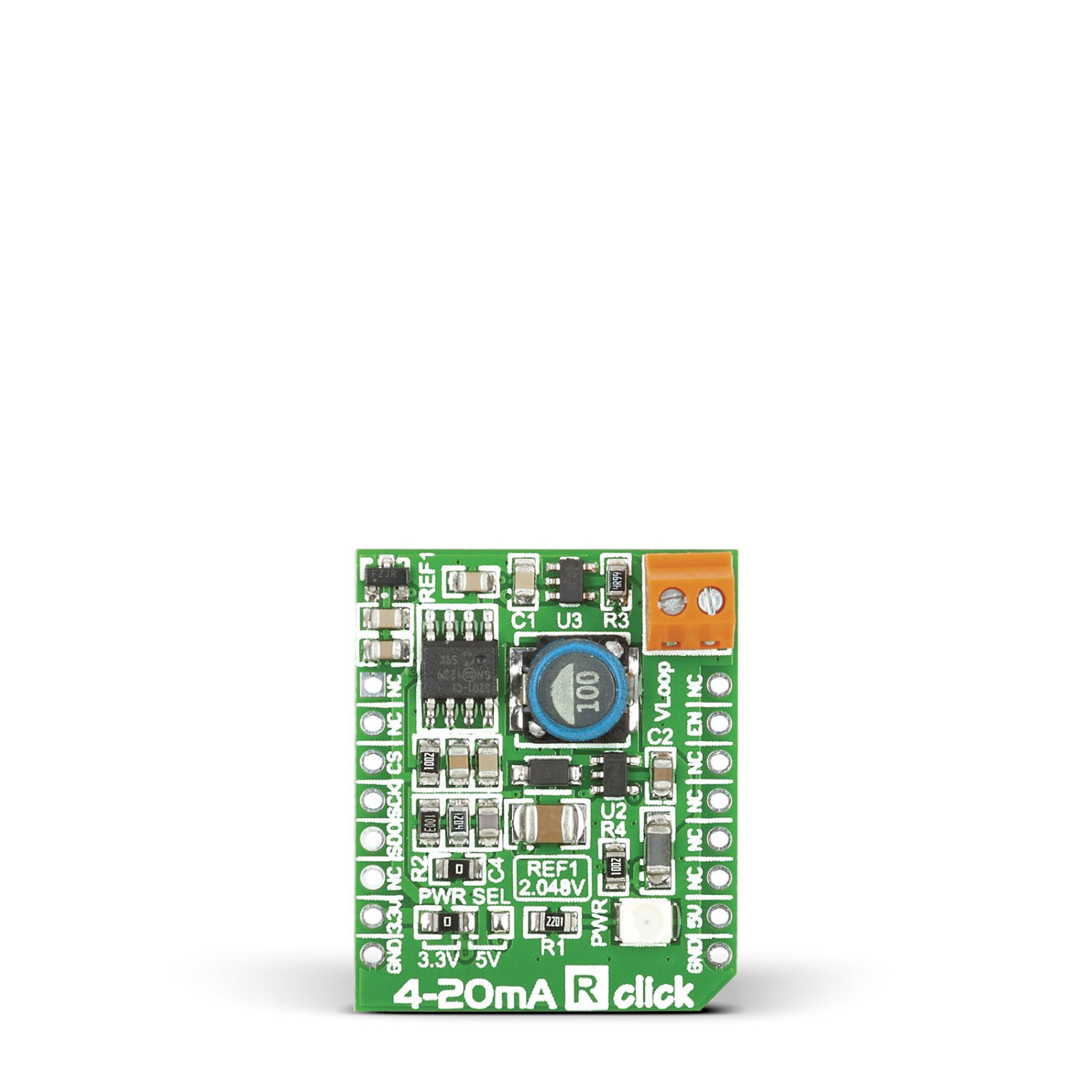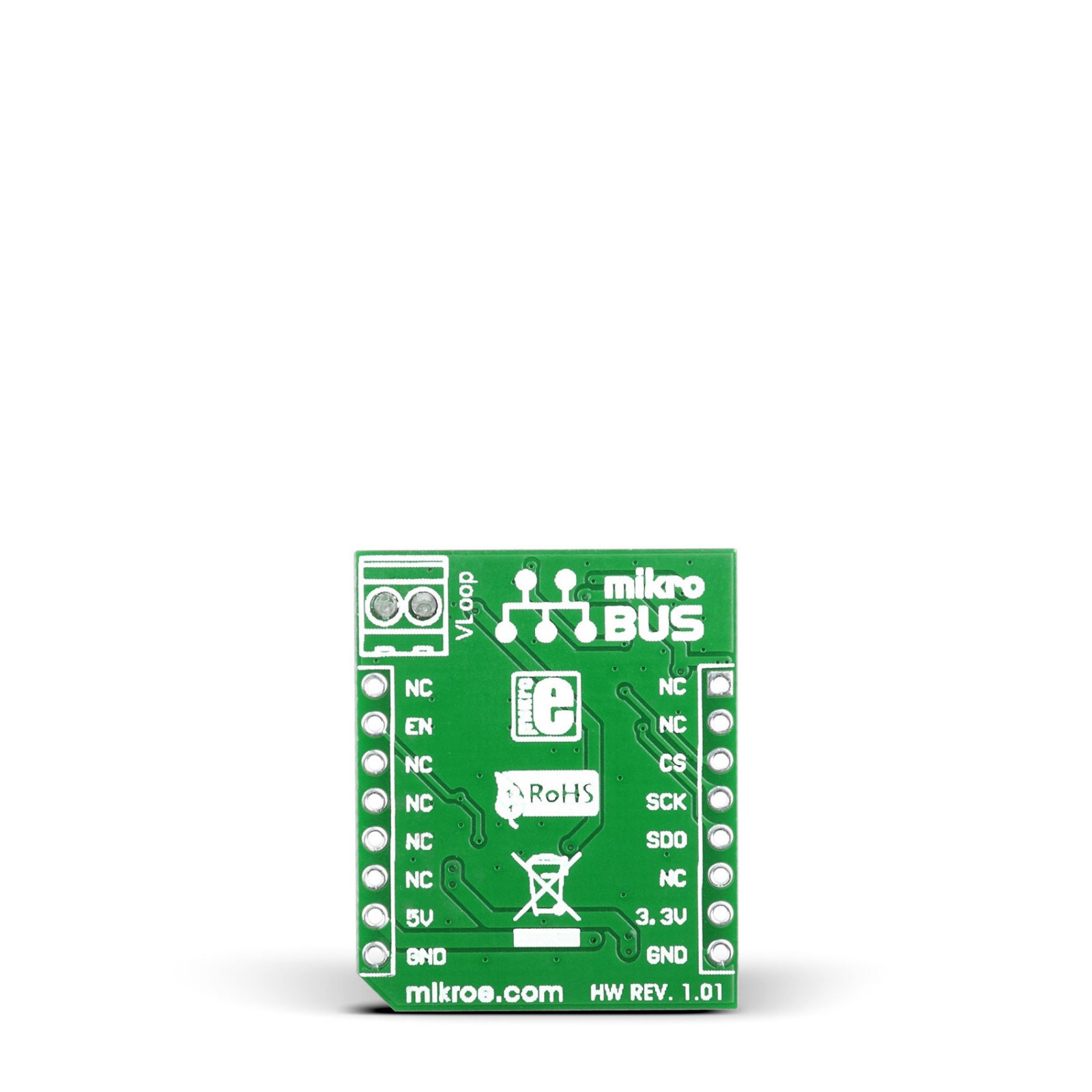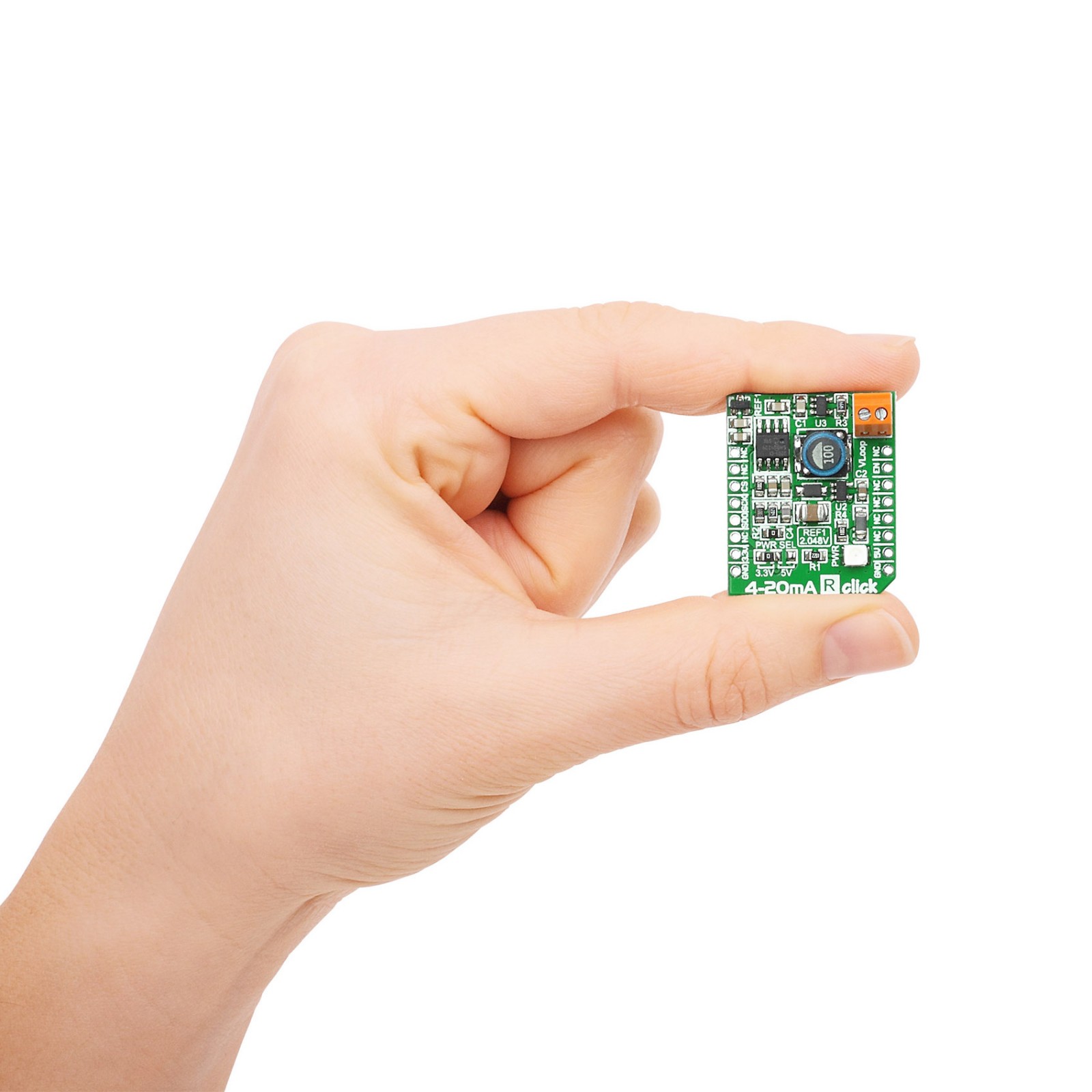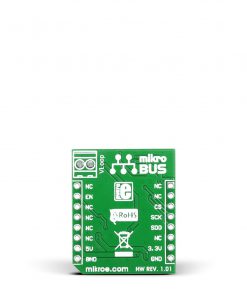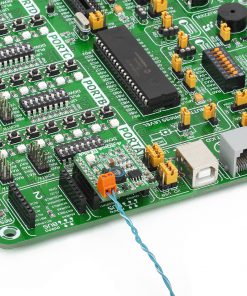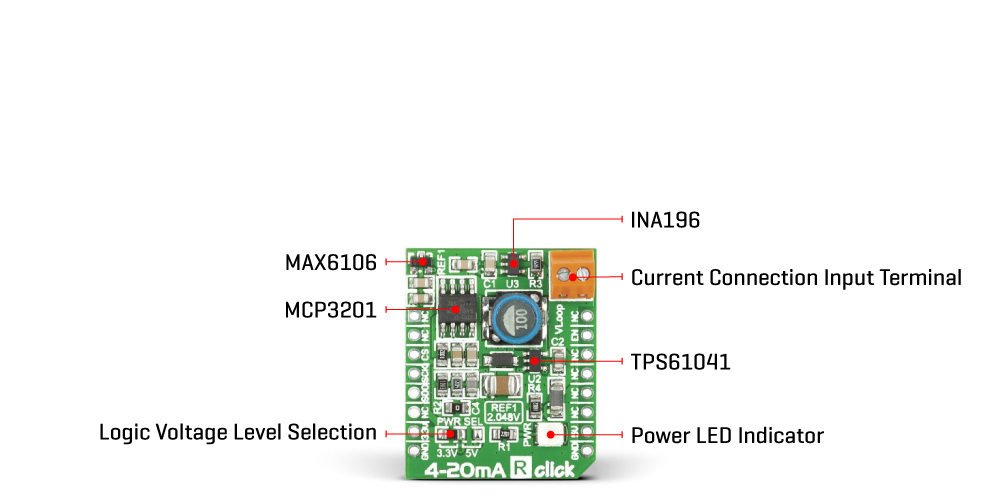4-20mA R Click is a compact add-on board that serves as a receiver in a 4-20mA current loop standard. This board features INA196, a current shunt monitor from Texas Instruments. The INA196 can sense drops across the shunt at common-mode voltages from -16V up to +80V, independent of its supply voltage. Thanks to the boost converter, high input voltages necessary for proper operation are achieved, with its analog data processed via the onboard A/D converter SPI interface. Together with 4-20mA T Click, this Click board™ forms a complete 4-to-20mA current loop standard suitable for industrial process control, test systems, and more.
4-20mA R Click is supported by a mikroSDK compliant library, which includes functions that simplify software development. This Click board™ comes as a fully tested product, ready to be used on a system equipped with the mikroBUS™ socket.
 ccRF2 Click
1 × R790.00
ccRF2 Click
1 × R790.00  RS485 Click 5V
2 × R230.00
RS485 Click 5V
2 × R230.00  GPS Click
1 × R1,050.00
GPS Click
1 × R1,050.00  DIGI POT Click
1 × R370.00
DIGI POT Click
1 × R370.00  EXPAND Click
1 × R260.00
EXPAND Click
1 × R260.00 
